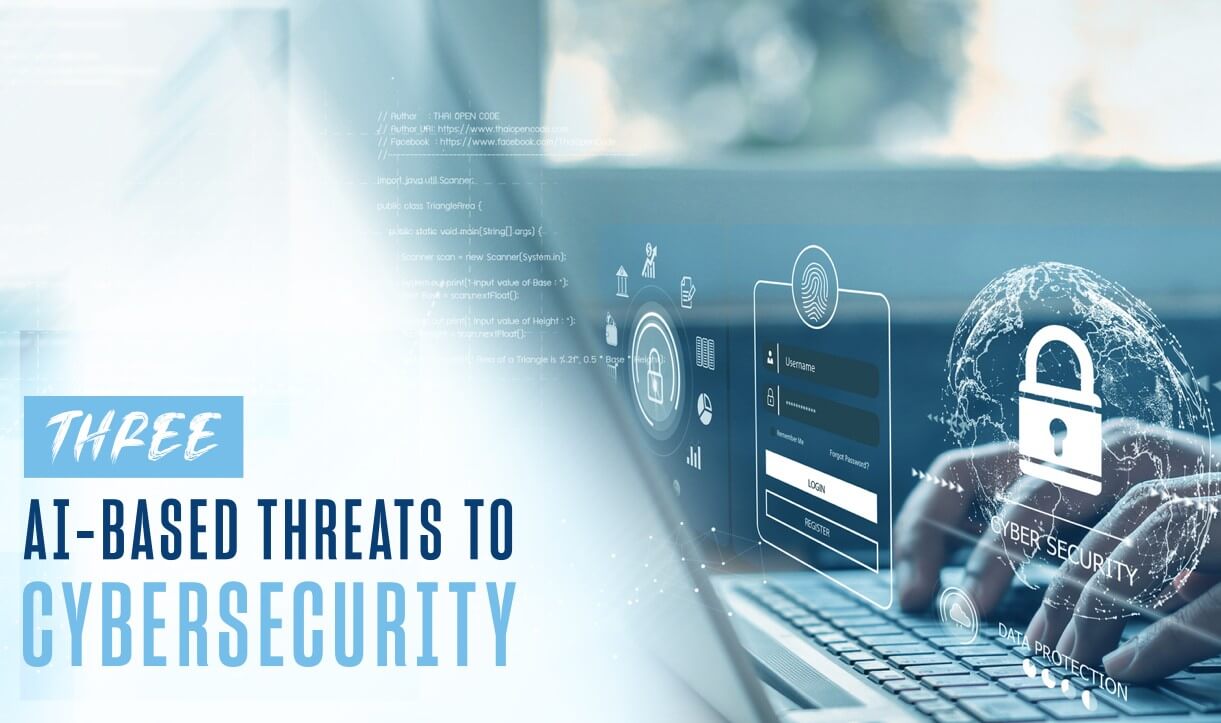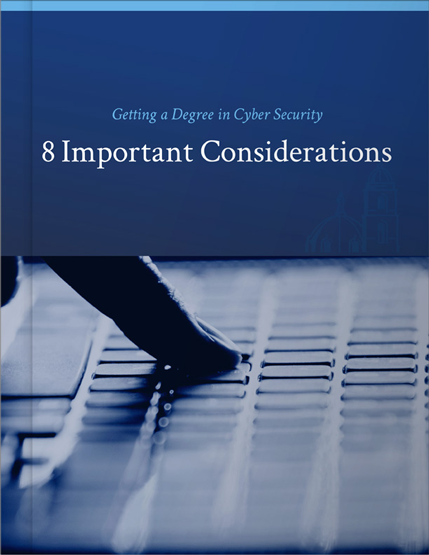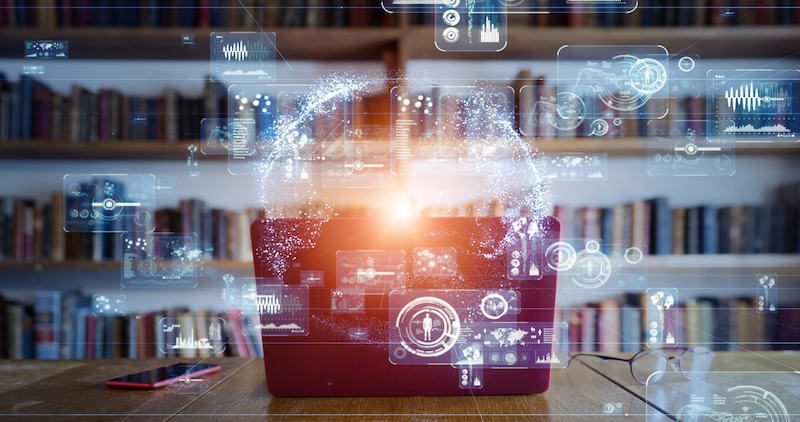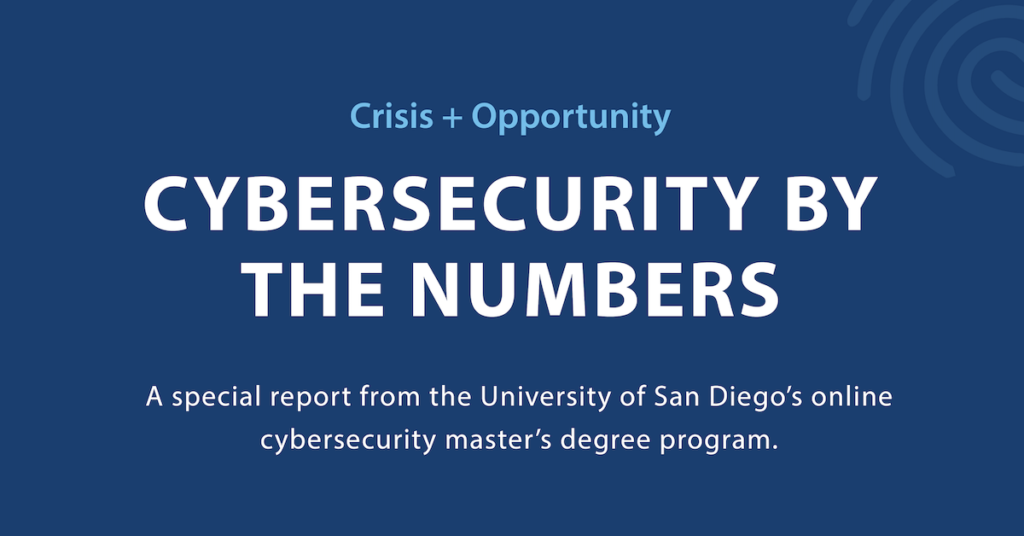The rise of artificial intelligence (AI) has been well-documented by almost every news source. Whether it’s an overview of how AI will transform the world or the ways it will affect your life across different sectors , everyone has an opinion on AI these days. What sometimes gets lost in the greater discussion, however, is how AI is changing cybersecurity.
AI cybersecurity is a rapidly growing field that utilizes AI to help prevent and respond to cyber-attacks. Corporations, governments and financial institutions all would do well to take an interest in AI cybersecurity, as the confidential and critical information kept by most companies, governments and financial institutions makes them an appealing target.
In this blog post, we explore how AI is changing cybersecurity, from advantages to potential threats, and discuss how to break into this booming field with the help of a USD online cybersecurity degree.
What Is AI?
AI, of which the popular chatbot ChatGPT is just one example, refers to the ability of a robot or computer to perform tasks that previously required human intelligence to complete. The global AI software market is expected to hit $22.6 billion by 2025, so you can imagine how broad the applications of AI truly are. Let’s explore some of the ways different industries are using AI right now.
Finance
AI in the financial sector can be employed externally to improve the customer experience or internally to improve processes and operational efficiency. Many customer-focused processes, including answering basic questions, processing loans and other services, can be completed using AI. AI can also provide analysis of data related to all sorts of KPIs, giving greater insights to employees and allowing for better decision-making. All of this leads to potential cost savings for banks using AI applications — up to an aggregate total of $447 billion as of 2023.
Digital Marketing
Tools like ChatGPT are shaking up the way digital marketing is performed. AI can now write increasingly intelligent and well-written blog posts, web pages, social media copy and more. This shift has upended traditional models of media creation, and it’s yet to see where this process shakes out. That’s to say nothing of the increased analytical capabilities being employed in digital marketing of CRM and sales applications.
Healthcare
Like finance, the healthcare field uses AI for many customer-based interactions. By automating repetitive, somewhat mindless tasks, humans are freed up to spend their time on other, more complex responsibilities. This combination leads to better patient care and fewer oversights. Even in the clinical space, AI is being used to assist doctors in detecting potential medical issues in scans.
Tech
AI applications in tech are growing in number and complexity by the day along with the programs themselves. For developers, there are a wide range of opportunities to work with AI in tech and utilize machine-learning algorithms to help create and shepherd along the latest developments. And with the market expected to reach $407 billion by 2027, the need for knowledgeable employees will only grow.
How AI Is Changing Cybersecurity
The ever-growing and evolving realm of AI has both positive and negative implications for cybersecurity. While notable conversations have begun surrounding the ethical uses of AI, there are many other considerations at play when discussing AI in cybersecurity. These are the major benefits that AI brings to cybersecurity:
Automation
While not at the level yet to replace humans entirely, many threat detection and response protocols can be carried out by AI. Fully deployed security AIs can save a company, on average, $3.05 million per data breach. This leads to more immediate and consistent threat detection and frees up employees’ time for more complex tasks.
Machine Learning
Machine learning (ML) has proven very useful in pattern detection and thorough penetration testing. It is a critical part of modern anti-virus and malware detection software, as well as a useful tool in email monitoring. With over 50% of companies experiencing some type of breach during the past year, the adoption of more advanced ML algorithms can’t come quickly enough.
Analytics
AI can process vast amounts of information much faster than humans. This ability makes it perfectly suited for analytics. When properly prompted, AI can generate almost any type of report on large volumes of data in seconds. This makes identifying complex trends and underlying causes much more achievable.
AI Improvements to Cybersecurity
The average human can only do so many tasks at the same time and process information at a certain speed. Automation and quicker, more effective responses are two of the key value propositions of AI cybersecurity when compared to using humans alone. Here are some other, more specific ways AI in cybersecurity is shaking up the game:
Threat Detection
AI is particularly suited to uncovering patterns and recognizing malware. By integrating AI cybersecurity, you significantly bring down the time it takes to identify and respond to a threat, leading to fewer and less significant breaches. A majority of companies, 51%, are already relying on AI as their main mode of threat detection and response.
Bot Defense
Bots make up a large portion of the traffic on the internet. Many are malicious in nature and can be used to gain access to confidential information or used to directly attack servers or networks, such as in a distributed denial of service (DDoS) incident. A full 51% of IT decision-makers acknowledged they wouldn’t be able to keep up with their threat load without the use of AI. With AI cybersecurity measures, however, suspicious activity can be immediately flagged and responded to rapidly.
Phishing Detection
Using natural language processing techniques, AI can identify words and phrases that are usually indicative of a phishing attack. This process extends to rooting out suspicious URLs and email domains. Warnings can then be sent to recipients, or the messages can be blocked entirely.
AI Threats to Cybersecurity
While AI in cybersecurity has proven very useful, there are certain limitations and drawbacks associated with the development and implementation of different models. These are the major issues to consider in how AI is changing cybersecurity.
Transparency
There isn’t currently much information out there about how many AI models were developed and trained. AI also has a harder time explaining how it drew certain conclusions, whereas a human can walk you through their thought process step-by-step. This limitation can be frustrating at best and debilitating at worst. With over half of business executives concerned with AI transparency, developers would do well to take note.
Fairness
Unintentional bias during the coding and training processes can lead to skewed outputs. Certain datasets can be overweighted or not be representative of the overall population of data. This is where transparency comes into play again, since without that level of insight there is no way of knowing if an AI model is fair. Indeed, a recent study of medical imaging AI models found over 80% are problematically biased, so developers should always keep an eye out for this issue.
Security
Proper cyber hygiene must be employed in order for AI to stay effective. Security design during building followed up by in-depth testing and implementing regular updates are all crucial components of keeping AI security measures operating at its peak. Those who take proactive steps can expect to see a clear improvement in results, as demonstrated by 80% of telecom companies who switched to AI-based detection systems and never looked back.
AI in cybersecurity is rapidly changing the nature of both threats posed and defensive measures. With so much hype around the topic, now is the perfect time to train on the latest advances in AI cybersecurity.
Looking for cybersecurity jobs? Also, take a look at our Top Paying Cybersecurity Jobs in 2023 guide for inspiration on where you want to take your career.
Here at The University of San Diego, we offer two advanced degrees in cybersecurity. The Master of Science in Cyber Security Operations and Leadership, which is 100% online, is ideal for professionals who are interested in gaining leadership skills and a deeper understanding of cybersecurity topics, theories and concepts. USD’s Master of Science in Cyber Security Engineering is geared toward those with an engineering background who aspire to become security engineers. Offered both online and in person, this program has been designated as a National Center for Academic Excellence.




